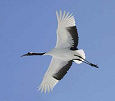|
A diverse array of foods and dishes can be found throughout Korea. Korea was once primarily an agricultural nation, and Koreans have cultivated rice as their staple food since ancient times. These days Korean cuisine is characterized by a wide variety of meat and fish dishes along with wild greens and vegetables. Various fermented and preserved food, such as kimchi (fermented spicy cabbage), jeotgal (seafood fermented in salt) and doenjang (fermented soy bean paste) are notable for their specific flavor and high nutritional value. The prominent feature of a Korean table setting is that all dishes are served at the same time. Traditionally, the number of side dishes varied from 3 for the lower classes to 12 for royal families. Table arrangements can vary depending on whether a noodle dish or meat is served. Formal rules have developed for table setting, demonstrating the attention people pay to food and dining. Compared to neighboring China and Japan, a spoon is used more often in Korea, especially when soups are served. |
Kinds of Traditional Korean Food
Boiled rice is the staple of Korean cuisine. Most people use sticky rice, which sometimes has beans, chestnuts, sorghum, red beans, barley or other cereals added for flavor and nutrition. Juk is thought of as highly nutritious and light. Many varieties of juk exist, for example, juk made of rice, red beans, pumpkin, abalone, ginseng, pine nuts, vegetables, chicken, mushrooms and bean sprouts. | ||
Soup is an essential dish when rice is served. Ingredients of different soups include vegetables, meat, fish, shellfish, seaweed, and beef bones. | ||
Jjigae is similar to guk but is thicker and hardier. The most famous jjigae is made from fermented soy bean paste. Jjigae is usually spicy and served piping hot in a heated stone bowl. | ||
 |
| 4. Jjim and Jorim (simmered meat or fish) Jjim and jorim are similar dishes which are prepared with vegetables and soaked in soy bean sauce, then slowly boiled together over a low flame.
| ||
Namul is made from slightly boiled or fried vegetables and wild greens mixed with salt, soy sauce, sesame salt, sesame oil, garlic, onions, and other spices. | ||
Jeotgal is a very salty food made of naturally fermented fish, shellfish, shrimp, oysters, fish roe, intestines and other ingredients. | ||
When cooking gui, marinated meats are barbecued over a charcoal fire. The most popular meats of this type are bulgogi and galbi. There are also many fish dishes which are cooked this way. | ||
Jeon is a kind of pancake made from mushrooms, pumpkin, slices of dried fish, oysters, unripe red peppers, meat or other ingredients which are mixed with salt and black pepper, dipped in flour and egg and fried in oil. | ||
Mandu is dumplings stuffed with beef, mushrooms, stir-fried zucchini, and mungbean sprouts. Pork, chicken, or fish is sometimes used instead of beef. |
'科學. 硏究分野' 카테고리의 다른 글
| [스크랩] 한국 미래 BT에 달려 있다 (0) | 2005.08.31 |
|---|---|
| [스크랩] 일본 과학기술계 동향 (0) | 2005.08.31 |
| [스크랩] 생명의 묘약 (0) | 2005.08.31 |
| [스크랩] 제약분야도 '삼성'LG'가 필요하다 (0) | 2005.08.31 |
| [스크랩] 농업생명공학이 여는 새 시대 (0) | 2005.08.31 |









